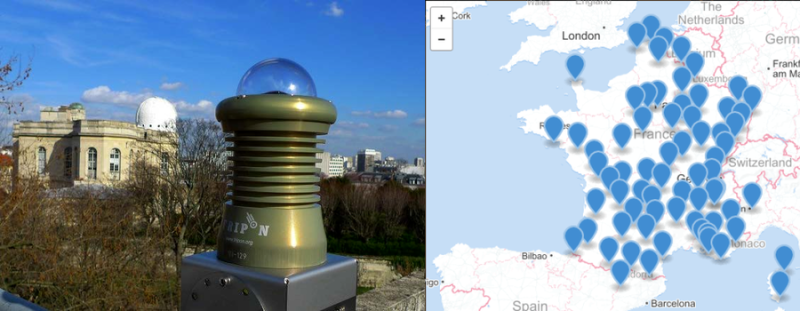Just a few weeks ago, we reported on a US NASA project to track the path and estimate the size of meteoroids in the sky using a distributed network of a handful of cameras. It turns out that there’s a similar French effort, and it’s even cooler: the Fireball Recovery and InterPlanetary Observation Network (FRIPON). (The name is cute, if the acronym is contrived: a “fripon” is a trickster in French.)
What’s cool about FRIPON is that they’re not just observing the meteorites and fireballs, but they’re actually sending people out to recover them when they’re big enough that they look like they’ve landed. There are around one hundred stations, enough that the team can pinpoint a landing to within 30 square kilometers or so. After that it’s up to a ground crew of volunteers to actually walk the ground and find the things. They’ve had a number of finds.
Like NASA’s fireball network, we’d like to see this project opened up to encourage more participation. SatNOGS or Blitzortung are the models we have in mind: instead of going for small numbers of expensive stations, why not an open design that people can throw together with a Pi Zero and a camera? Instead of carefully coordinating and requiring high reliability from a very few stations, why not just take any data people are willing to give you?
Anyone want to take this up? An open-source global fireball detection network would be a shoe-in for next year’s Hackaday Prize if done right, and there are tons of cool stuff here: computer vision and meteorite hunting are just the tip of the iceberg.
















How do you make a sky facing camera and avoid getting the CCD sun burnt, mechanical shutter?
I used a Samsung SUB-2000 security camera with a Fujifilm KTL-2.8-8VA DC Auto Iris lens stuffed into a Monoprice ML-606HB Outdoor Camera Housing pointing up, you need to seal the glass front plate with JB Weld on the Outdoor Camera Housing or else it will leak in a years time or less but other than that the Outdoor Camera Housing does well, the Samsung SUB-2000 security camera has amazing low light ability and is sometimes used by armature astronomers for live viewing with telescopes, I use Blue Iris video security software to watch and record the video from the camera.
use a CMOS camera.
on a side note, when using your Canon (with a CCD) running CHDK, do not fall asleep SHOOTING A SUNRISE TIMELAPSE!
I’ve shot heaps of timelapse sequences with my GoPro, had the sun in-frame wasn’t an issue, same with my new Canon that has a CMOS imaging element
Even better would be to combine this effort with Radio Astronomy based meteor detection with a network of good quality SDRs (e.g. Fun Cube Dongle pro+ or SDRplay RSP2 and software such as Spectrum Lab or SDRuno) this paper from David Morgan discusses the concept: paper:http://www.britastro.org/radio/downloads/TECHNIQUES_FOR_USING_THE_RTL_Dongle.pdf
Just don’t try this in Romania. The local IRS will track you down and ask you for ridiculously high income taxes because they still believe everything falling from the sky contains gold and belongs to the (totalitarian) state.
Hello, FRIPON is not the pioneer in France for the automatic detection of meteoroids and others flying things. The pioneer is the association “UFO-science” with their “UFOCatch” station and the S.A.D.E.P.A.N network, and if i remenber the station is an open source project. For more informations go on their website, it is in english too, or contact the members. Cheers